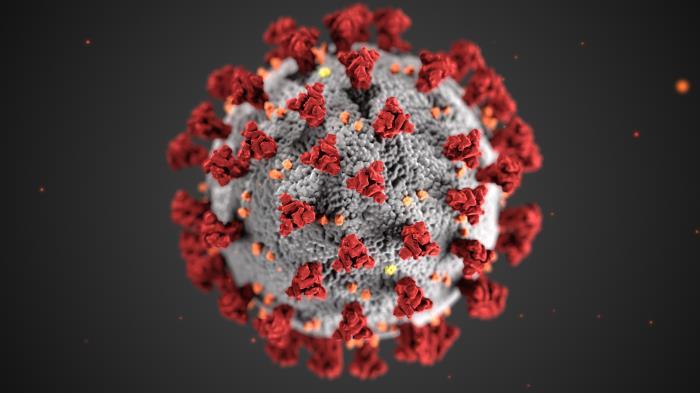Following the authorities’ advice no doubt!
Corona Virus Mortality Risk for Diabetes and High Blood Pressure
My understanding is that to achieve “herd immunity” they need something like 60% of the population infected. The problem is that there is no evidence whatsoever that the antibodies last for very long. On the surface the British plan seems to be to sacrifice it’s obese and senior citizens on the altar of economic growth. It’ll mean less economic damage due to the virus, but it’s kind of sick/evil.
Has anybody there actually presented evidence that immunity will persist for more than a few months, or that immunity to one strain will confer immunity to the new strains that will inevitably evolve after the virus is presented with millions of hosts to replicate in? Sounds insane.
Yup. Those first two strains arose when there were less than 40,000 cases. God only knows how many there are now, or how many there will be when the case count hits 4 million.
In the US, the CDC and NIH are doing their part to ensure we have as many cases as possible. Unlike the British though we’re doing it through sheer incompetence.
There are a few dozen bureaucrats like US Surgeon General Dr. Jerome Adams who should be publicly executed when this is all said and done.
Adams reserved a special place in hell when he told Americans that masks do not work. Its obvious now that social distancing and masks are two prerequisites to slowing the spread.
I think the UK government has concluded that the virus cannot be eradicated by containment so the next best thing is try to slow the spread so they don’t run out of ventilators. No chance of that working unless the youngin’s cooperate and so far doesn’t appear they’re willing. I just assume we’ll all be getting this virus sooner or later. Will all our diet (and fitness) effort pay off?
I had read that the the mutation of l from
s was something that was likely to occur near the time when it first became human transmissible. Further mutations like that are less likely
I don’t know if he is right or wrong… but it sure is nice to hear someone thinking about the best strategy rather than the best optics, and explaining it.
When he said “You can’t quarentine people for three months” I almost cried. I’ve been in semi-quarentine for 2.5 months now. I can go out, but there is nowhere to go. The park, the grocery store… and the park isn’t that close. Thankfully I have a VPN, so I am not limited to Chinese internet  . No work. I mean, I’m really glad I’m not sick and no one I know is sick. My city has 16 active reported cases and we’ve had one death. But quarentine is a real deal. Economic repercussions are more than just numbers in the stock market. I don’t know what I’d do without my family’s help right now. Hopefully I get back to work before it impacts them.
. No work. I mean, I’m really glad I’m not sick and no one I know is sick. My city has 16 active reported cases and we’ve had one death. But quarentine is a real deal. Economic repercussions are more than just numbers in the stock market. I don’t know what I’d do without my family’s help right now. Hopefully I get back to work before it impacts them.
But now my 80yr old aunt and uncle have possibly been exposed. My cousin is in the worst hit city in the US, so she can’t go be with them because she is healthy and therefore cannot get tested. Crazypants.
I am politically neutral. I’m not going to excuse anything the Chinese government has done. But if I need a test, at least I know I can get one.
That’s great news if true. The best feature of CV19 is that doesn’t pose a risk to kids. If that were to change it would change things considerably.
Nice video!
Seems like its “spike” is what makes a virus so transmittable.
BEHIND-THE-SCENES IN NIH’S LAB
The new coronavirus is studded with a protein aptly named “spike” that lets the virus burrow into human cells. Block that protein, and people won’t get infected. That makes “spike” the target of most vaccine research.
Not so long ago, scientists would have had to grow the virus itself to create a vaccine. The NIH is using a new method that skips that step. Researchers instead copy the section of the virus’ genetic code that contains the instructions for cells to create the spike protein, and let the body become a mini-factory. …” …More
That’s ingenious! Kill its miRNA spikes and you disable it! And inject that into humans?
Hooray! The New York Times finally wrote an article that brings attention to the fact that the 50% of America that is obese is going to be dying at dramatically higher rates than most people currently expect.
They note that people of all ages are 160% more likely to be killed by CV19 if they have one of the following conditions, and 260% more likely to die if they have 2 of the following: high blood pressure, cardiovascular disease, cancer or type 1/type 2 diabetes! It’s the first article of it’s kind that I’ve seen.
My dearw Astwo-wabbit,
I’m surprised. I totally expected to see a breakdown of the number by you. Especially when just a few days ago, Gov Cuomo of NY released his states numbers ((and in various ways). I’m not going to cover them all, but very interesting breakdown he was quoting. Male vs Female, race, etc… Not very comprehensive, but more than I had heard anywhere else. That and he gave out the numbers I was interested in hearing, which are really the most important ones to know (imho) TOTAL TESTED. Thats right, he actually stated what percantage of a population was actually tested. He even gave numbers of positive tests to go with that. I couldnt beleive it. I dont want to spoil the math for the math nerds, or bore everyone else. But it went something like this…
[edit: took me a while to find the video with all his numbers https://www.democratandchronicle.com/videos/news/politics/albany/2020/04/23/early-new-york-study-shows-13-9-covid-19-infection-rate/3012258001/ ]
13.9% of of those tested were positive.
Using the numbers Cuomo gave, it made the death rate equal to about 0.0012%
But that’s just a loosley calculated number. Extrapolating percentages given to match the entire population. Of course it will vary from city to city or state to state. But it isn’t anything to fear and cower over, or even shut down an economy over.
Hope all is well, and CCPV free.
Keto Vitae!
Maybe of course they are just dying sooner anyway and COVID is being used as an “excuse”
COVID sceptic… who me?
We’re still a long way from the 2 usual days of death figure globally from/with/of COVID…
RJ, did you get that decimal and add the percent sign? Even taking the entire state population, the number of deaths is already about 100 times that…
Mark, in the end we won’t know the exact cause of every death - how would you figure things overall?
Doesn’t it make sense to take the total deaths in a given time period, subtract the historical average number of deaths and then assume the remainder are due to Covid-19, since there’s nothing else unusual going on?
No that doesn’t make sense at all… it makes a huge assumption … one that has led to likely economic disaster for millions…
So far alleged COVID deaths are in total about 1.3 days worths of daily global deaths anyway. Spread over the 116 days we have had so far this year that’s hardly a blip…
Where do you think the “extra” deaths come from, then? Example: an area averages 10,000 deaths over a period of time. It records 18,000 deaths over the same period of time, and 5000 Covid-19 deaths. What would you attribute the remaining 3000 deaths to, if not Covid-19?
Non treatment of various illness due to people being too scared to go to hospital? More people dying from strokes and heart attacks
Murders due to domestic problems and suicides caused by economic problems?
We are seeing this already in the UK.
It may be ‘natural’ to think that deaths increase during economic slowdowns (several studies even mention that human tendency) but the evidence is that the opposite thing happens.
If an argument can actually be made that the numbers are being substantially affected by causes such as you describe, that is one thing. Are there any such statistics? While obviously “some cases” could likely be found, I doubt they would even begin to bridge the large gap between the normal rate of deaths + known Covid-19 deaths and the total number of deaths.
Moreover, economic slowdowns actually feature less mortality rather than more than normal. There are reductions in deaths - in the U.S., the largest killer of people aged 54 or less is traffic accidents, and those have declined substantially due to less economic activity. Fewer deaths from occupational accidents, pollution, etc., as well. There are plenty of examples of this.
https://www.jstor.org/stable/pdf/2276951.pdf
–As far back as 1922 it was noted that the death rate increased during better economic times in the U.S., and decreased during bad times.
During the worst years of the Great Depression, mortality rates declined, rather than rose. “𝑃𝑜𝑝𝑢𝑙𝑎𝑡𝑖𝑜𝑛 ℎ𝑒𝑎𝑙𝑡ℎ 𝑑𝑖𝑑 𝑛𝑜𝑡 𝑑𝑒𝑐𝑙𝑖𝑛𝑒 𝑎𝑛𝑑 𝑖𝑛𝑑𝑒𝑒𝑑 𝑔𝑒𝑛𝑒𝑟𝑎𝑙𝑙𝑦 𝑖𝑚𝑝𝑟𝑜𝑣𝑒𝑑 𝑑𝑢𝑟𝑖𝑛𝑔 𝑡ℎ𝑒 4 𝑦𝑒𝑎𝑟𝑠 𝑜𝑓 𝑡ℎ𝑒 𝐺𝑟𝑒𝑎𝑡 𝐷𝑒𝑝𝑟𝑒𝑠𝑠𝑖𝑜𝑛, 1930–1933, 𝑤𝑖𝑡ℎ 𝑚𝑜𝑟𝑡𝑎𝑙𝑖𝑡𝑦 𝑑𝑒𝑐𝑟𝑒𝑎𝑠𝑖𝑛𝑔 𝑓𝑜𝑟 𝑎𝑙𝑚𝑜𝑠𝑡 𝑎𝑙𝑙 𝑎𝑔𝑒𝑠, 𝑎𝑛𝑑 𝑙𝑖𝑓𝑒 𝑒𝑥𝑝𝑒𝑐𝑡𝑎𝑛𝑐𝑦 𝑖𝑛𝑐𝑟𝑒𝑎𝑠𝑖𝑛𝑔 𝑏𝑦 𝑠𝑒𝑣𝑒𝑟𝑎𝑙 𝑦𝑒𝑎𝑟𝑠 𝑖𝑛 𝑚𝑎𝑙𝑒𝑠, 𝑓𝑒𝑚𝑎𝑙𝑒𝑠, 𝑤ℎ𝑖𝑡𝑒𝑠, 𝑎𝑛𝑑 𝑛𝑜𝑛𝑤ℎ𝑖𝑡𝑒𝑠. 𝐹𝑜𝑟 𝑚𝑜𝑠𝑡 𝑎𝑔𝑒 𝑔𝑟𝑜𝑢𝑝𝑠, 𝑚𝑜𝑟𝑡𝑎𝑙𝑖𝑡𝑦 𝑡𝑒𝑛𝑑𝑒𝑑 𝑡𝑜 𝑝𝑒𝑎𝑘 𝑑𝑢𝑟𝑖𝑛𝑔 𝑦𝑒𝑎𝑟𝑠 𝑜𝑓 𝑠𝑡𝑟𝑜𝑛𝑔 𝑒𝑐𝑜𝑛𝑜𝑚𝑖𝑐 𝑒𝑥𝑝𝑎𝑛𝑠𝑖𝑜𝑛 (𝑠𝑢𝑐ℎ 𝑎𝑠 1923, 1926, 1929, 𝑎𝑛𝑑 1936–1937). 𝐼𝑛 𝑐𝑜𝑛𝑡𝑟𝑎𝑠𝑡, 𝑡ℎ𝑒 𝑟𝑒𝑐𝑒𝑠𝑠𝑖𝑜𝑛𝑠 𝑜𝑓 1921, 1930–1933, 𝑎𝑛𝑑 1938 𝑐𝑜𝑖𝑛𝑐𝑖𝑑𝑒𝑑 𝑤𝑖𝑡ℎ 𝑑𝑒𝑐𝑙𝑖𝑛𝑒𝑠 𝑖𝑛 𝑚𝑜𝑟𝑡𝑎𝑙𝑖𝑡𝑦 𝑎𝑛𝑑 𝑔𝑎𝑖𝑛𝑠 𝑖𝑛 𝑙𝑖𝑓𝑒 𝑒𝑥𝑝𝑒𝑐𝑡𝑎𝑛𝑐𝑦”
– The same was true for the entire period of 1900 - 1996. “𝑡ℎ𝑟𝑜𝑢𝑔ℎ𝑜𝑢𝑡 𝑡ℎ𝑒 20𝑡ℎ 𝑐𝑒𝑛𝑡𝑢𝑟𝑦 𝑒𝑐𝑜𝑛𝑜𝑚𝑖𝑐 𝑒𝑥𝑝𝑎𝑛𝑠𝑖𝑜𝑛𝑠 𝑖𝑛 𝑡ℎ𝑒 𝑈𝑆 𝑎𝑟𝑒 𝑎𝑠𝑠𝑜𝑐𝑖𝑎𝑡𝑒𝑑 𝑤𝑖𝑡ℎ 𝑖𝑛𝑐𝑟𝑒𝑎𝑠𝑖𝑛𝑔 𝑚𝑜𝑟𝑡𝑎𝑙𝑖𝑡𝑦 𝑓𝑜𝑟 𝑎𝑙𝑙 𝑔𝑟𝑜𝑢𝑝𝑠”
Same in England and Wales.
“𝑈𝑠𝑖𝑛𝑔 𝑑𝑎𝑡𝑎 𝑓𝑜𝑟 𝐸𝑛𝑔𝑙𝑎𝑛𝑑 𝑎𝑛𝑑 𝑊𝑎𝑙𝑒𝑠 𝑑𝑢𝑟𝑖𝑛𝑔 𝑡ℎ𝑒 𝑦𝑒𝑎𝑟𝑠 1840–2000, 𝑎 𝑛𝑒𝑔𝑎𝑡𝑖𝑣𝑒 𝑟𝑒𝑙𝑎𝑡𝑖𝑜𝑛 𝑖𝑠 𝑓𝑜𝑢𝑛𝑑 𝑏𝑒𝑡𝑤𝑒𝑒𝑛 𝑒𝑐𝑜𝑛𝑜𝑚𝑖𝑐 𝑔𝑟𝑜𝑤𝑡ℎ – 𝑚𝑒𝑎𝑠𝑢𝑟𝑒𝑑 𝑏𝑦 𝑡ℎ𝑒 𝑟𝑎𝑡𝑒 𝑜𝑓 𝑔𝑟𝑜𝑤𝑡ℎ 𝑜𝑓 𝑔𝑟𝑜𝑠𝑠 𝑑𝑜𝑚𝑒𝑠𝑡𝑖𝑐 𝑝𝑟𝑜𝑑𝑢𝑐𝑡 (𝐺𝐷𝑃) – 𝑎𝑛𝑑 ℎ𝑒𝑎𝑙𝑡ℎ 𝑝𝑟𝑜𝑔𝑟𝑒𝑠𝑠 – 𝑎𝑠 𝑖𝑛𝑑𝑒𝑥𝑒𝑑 𝑏𝑦 𝑡ℎ𝑒 𝑎𝑛𝑛𝑢𝑎𝑙 𝑖𝑛𝑐𝑟𝑒𝑎𝑠𝑒 𝑖𝑛 𝑙𝑖𝑓𝑒 𝑒𝑥𝑝𝑒𝑐𝑡𝑎𝑛𝑐𝑦 𝑎𝑡 𝑏𝑖𝑟𝑡ℎ”
Same in Japan. " 𝑚𝑜𝑟𝑡𝑎𝑙𝑖𝑡𝑦 𝑟𝑎𝑡𝑒𝑠 𝑖𝑛 𝑖𝑛𝑑𝑢𝑠𝑡𝑟𝑖𝑎𝑙 𝑐𝑜𝑢𝑛𝑡𝑟𝑖𝑒𝑠 𝑡𝑒𝑛𝑑 𝑡𝑜 𝑟𝑖𝑠𝑒 𝑖𝑛 𝑒𝑐𝑜𝑛𝑜𝑚𝑖𝑐 𝑒𝑥𝑝𝑎𝑛𝑠𝑖𝑜𝑛𝑠 𝑎𝑛𝑑 𝑓𝑎𝑙𝑙 𝑖𝑛 𝑒𝑐𝑜𝑛𝑜𝑚𝑖𝑐 𝑟𝑒𝑐𝑒𝑠𝑠𝑖𝑜𝑛𝑠."
https://onlinelibrary.wiley.com/doi/abs/10.1002/hec.3495
During the ‘Great Recession’ that began in 2007, unemployment in Spain and Greece more than tripled - (more than a quarter of the population was out of work) - but the increase in life expectancy in those two countries was among the best in Europe.
“𝑊𝑒 𝑎𝑛𝑎𝑙𝑦𝑧𝑒 𝑡ℎ𝑒 𝑒𝑣𝑜𝑙𝑢𝑡𝑖𝑜𝑛 𝑜𝑓 𝑚𝑜𝑟𝑡𝑎𝑙𝑖𝑡𝑦‐𝑏𝑎𝑠𝑒𝑑 ℎ𝑒𝑎𝑙𝑡ℎ 𝑖𝑛𝑑𝑖𝑐𝑎𝑡𝑜𝑟𝑠 𝑖𝑛 27 𝐸𝑢𝑟𝑜𝑝𝑒𝑎𝑛 𝑐𝑜𝑢𝑛𝑡𝑟𝑖𝑒𝑠 𝑏𝑒𝑓𝑜𝑟𝑒 𝑎𝑛𝑑 𝑎𝑓𝑡𝑒𝑟 𝑡ℎ𝑒 𝑠𝑡𝑎𝑟𝑡 𝑜𝑓 𝑡ℎ𝑒 𝐺𝑟𝑒𝑎𝑡 𝑅𝑒𝑐𝑒𝑠𝑠𝑖𝑜𝑛. 𝑊𝑒 𝑓𝑖𝑛𝑑 𝑡ℎ𝑎𝑡 𝑖𝑛 𝑡ℎ𝑒 𝑐𝑜𝑢𝑛𝑡𝑟𝑖𝑒𝑠 𝑤ℎ𝑒𝑟𝑒 𝑡ℎ𝑒 𝑐𝑟𝑖𝑠𝑖𝑠 ℎ𝑎𝑠 𝑏𝑒𝑒𝑛 𝑝𝑎𝑟𝑡𝑖𝑐𝑢𝑙𝑎𝑟𝑙𝑦 𝑠𝑒𝑣𝑒𝑟𝑒, 𝑚𝑜𝑟𝑡𝑎𝑙𝑖𝑡𝑦 𝑟𝑒𝑑𝑢𝑐𝑡𝑖𝑜𝑛𝑠 𝑖𝑛 2007–2010 𝑤𝑒𝑟𝑒 𝑐𝑜𝑛𝑠𝑖𝑑𝑒𝑟𝑎𝑏𝑙𝑦 𝑏𝑖𝑔𝑔𝑒𝑟 𝑡ℎ𝑎𝑛 𝑖𝑛 2004–2007.”



